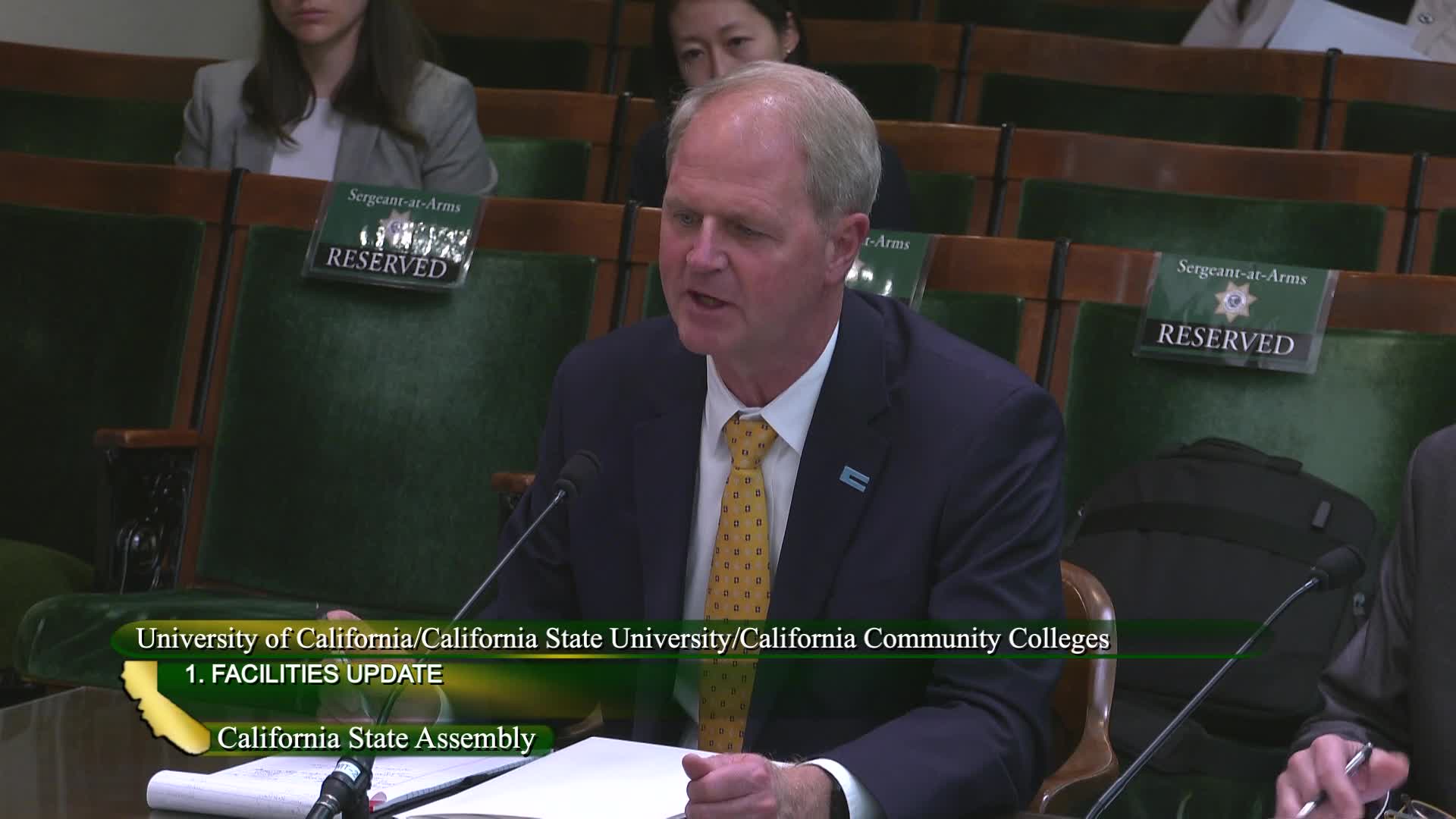California Community Colleges discuss $2B deferred maintenance backlog and funding strategies
May 06, 2025 | California State Assembly, House, Legislative, California
This article was created by AI summarizing key points discussed. AI makes mistakes, so for full details and context, please refer to the video of the full meeting. Please report any errors so we can fix them. Report an error »

In a recent meeting of the Assembly Budget Subcommittee No. 3 on Education Finance, California lawmakers and education leaders discussed pressing issues surrounding the maintenance and funding of educational facilities across the state. A significant focus was placed on the staggering $2 billion deferred maintenance backlog affecting community colleges, highlighting the urgent need for a more structured approach to funding and maintenance.
The conversation underscored the importance of establishing a clear financial commitment from the state to support ongoing maintenance and operational costs for educational institutions. Experts suggested that setting aside a percentage of the general fund for maintenance could help address the growing backlog and ensure that campuses remain safe and functional for students and staff. This proposal aligns with existing education codes that mandate districts to allocate a minimum of half a percent of their general fund for maintenance.
Additionally, the subcommittee explored the concept of a "total cost of ownership" model for new buildings, which would require planning for future operational and maintenance costs at the outset of construction. This proactive approach aims to prevent the financial strain that often accompanies new facilities, as seen in the case of UC Merced, which faced significant debt due to self-financed expansions.
The discussions also touched on the need for a reliable partnership between state funding and educational institutions. Leaders expressed a desire for more predictable funding streams to alleviate the uncertainty that complicates budgeting for essential projects. The consensus was clear: a collaborative effort between the state and educational institutions is crucial for fostering growth and maintaining the quality of education in California.
As the subcommittee continues to address these challenges, the outcomes of these discussions could significantly impact the future of educational infrastructure and the overall learning environment for students across the state. The commitment to improving maintenance funding and establishing clearer financial expectations could pave the way for a more sustainable and effective educational system in California.
The conversation underscored the importance of establishing a clear financial commitment from the state to support ongoing maintenance and operational costs for educational institutions. Experts suggested that setting aside a percentage of the general fund for maintenance could help address the growing backlog and ensure that campuses remain safe and functional for students and staff. This proposal aligns with existing education codes that mandate districts to allocate a minimum of half a percent of their general fund for maintenance.
Additionally, the subcommittee explored the concept of a "total cost of ownership" model for new buildings, which would require planning for future operational and maintenance costs at the outset of construction. This proactive approach aims to prevent the financial strain that often accompanies new facilities, as seen in the case of UC Merced, which faced significant debt due to self-financed expansions.
The discussions also touched on the need for a reliable partnership between state funding and educational institutions. Leaders expressed a desire for more predictable funding streams to alleviate the uncertainty that complicates budgeting for essential projects. The consensus was clear: a collaborative effort between the state and educational institutions is crucial for fostering growth and maintaining the quality of education in California.
As the subcommittee continues to address these challenges, the outcomes of these discussions could significantly impact the future of educational infrastructure and the overall learning environment for students across the state. The commitment to improving maintenance funding and establishing clearer financial expectations could pave the way for a more sustainable and effective educational system in California.
View full meeting
This article is based on a recent meeting—watch the full video and explore the complete transcript for deeper insights into the discussion.
View full meeting
